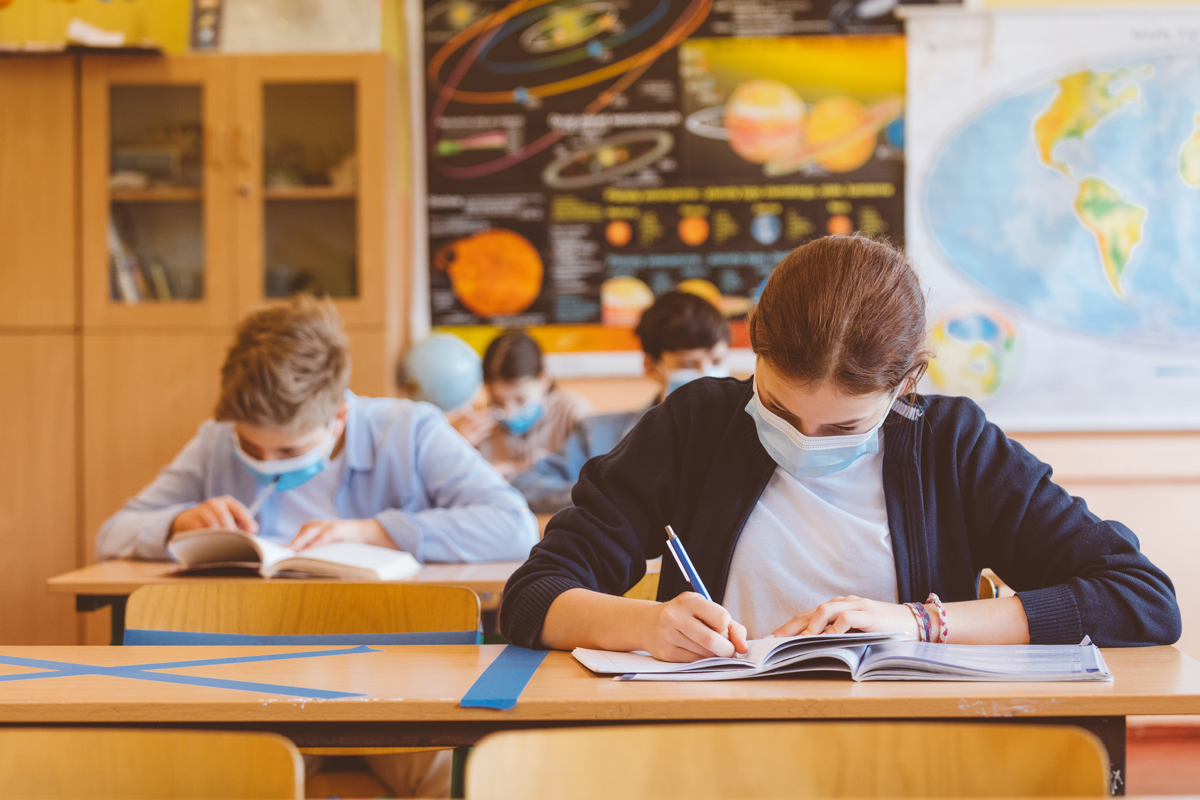Much like school-related guidance released in recent weeks from the Centers for Disease Control and Prevention and the California Department of Public Health, updated guidance from the American Association of Pediatrics focuses on returning all students to in-person instruction safely in the 2021–22 school year.
“Schools and school-supported programs are fundamental to child and adolescent development and well-being and provide our children and adolescents with academic instruction; social and emotional skills, safety, reliable nutrition, physical/occupational/speech therapy, mental health services, health services, and opportunities for physical activity, among other benefits. Beyond supporting the educational development of children and adolescents, schools can play a critical role in addressing racial and social inequity,” the guidance states.
AAP recommendations
The guidance references the critical importance of using science and data to guide COVID-19 mitigation strategies in the new school year. Included in AAP recommendations are:
- All eligible individuals should receive the COVID-19 vaccine.
- Schools should provide adequate and timely COVID-19 vaccination resources for students and families.
- All students over the age of 2 and all school staff should wear face masks at school (unless medical or developmental conditions prohibit use). The AAP recommends universal masking in school at this time for the following reasons:
-
- a significant portion of the student population is not eligible for vaccination
- protection of unvaccinated students from COVID-19 and to reduce transmission
- potential difficulty in monitoring or enforcing mask policies for those who are not vaccinated; in the absence of schools being able to conduct this monitoring, universal masking is the best and most effective strategy to create consistent messages, expectations, enforcement and compliance without the added burden of needing to monitor vaccination status
- possibility of low vaccination uptake within the surrounding school community
-
- continued concerns for variants that are more easily spread among children, adolescents and adults
- Adequate and timely COVID-19 testing resources must be available and accessible.
- Schools must continue to take a multi-pronged, layered approach to protect students, teachers, and staff (i.e., vaccination, universal mask use, ventilation, testing, quarantining, and cleaning and disinfecting). Combining these layers of protection will make in-person learning safe and possible. Schools should monitor the implementation and effectiveness of these policies.
- School districts must be in close communication and coordinate with state and/or local public health authorities, school nurses, local pediatric practitioners and other medical experts.
- School policies should be guided by supporting the overall health and well-being of all children, adolescents, their families, and their communities and should also look to create safe working environments for educators and school staff. This focus on overall health and well-being includes addressing the behavioral/mental health needs of students and staff.
The guidance also includes special sections on special considerations that schools should consider during the pandemic including:
- Monitoring attendance and acting quickly to address chronic absenteeism
- A plan to ensure a review of each student with an individualized education program to determine the needs for compensatory education to adjust for lost instructional time and disruption in other related services
- Working with pediatricians and local public health authorities to promote childhood vaccination messaging well before the start of the school year and throughout the school year
- Continuing vision and hearing screenings whenever possible to do so safely
- Behavioral and emotional support for students and staff





